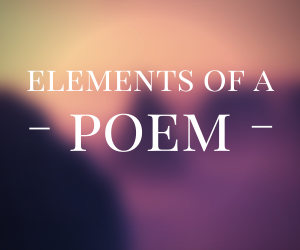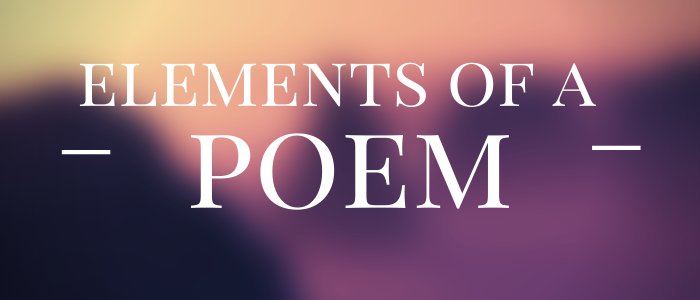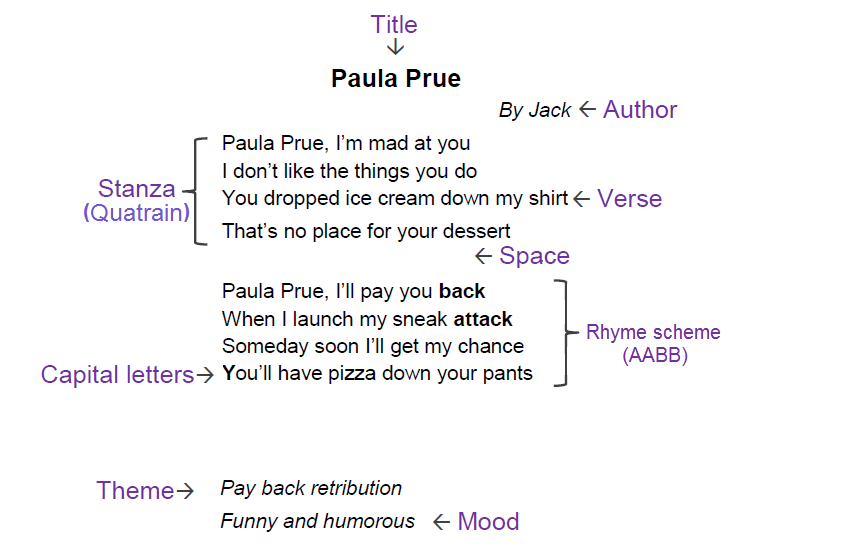There are so many different kinds of poems and it's almost impossible to define, but usually a poem is a piece of writing in which the words are chosen for their beauty and sound and are carefully arranged, often in short lines that rhyme.
The name of the poem.
A person who writes poems. They usually leave their signature.
A fixed number of lines of verse forming a unit of a poem.
Names for stanzas:
- Couplet (2 lines).
- Tercet (3 lines).
- Quatrain (4 lines).
- Cinquain (5 lines).
- Sestet (6 lines).
- Septet (7 lines).
- Octave (8 lines).
A gap between stanzas.
A single line in a poem. It gives a structure to poetry form.
Here are the most common types of verses:
- Rhymed verse: It's the most common and it usually has a metrical form that rhymes throughout.
- Blank verse: It has no rhyme scheme. However, it has a consistent meter with 10 syllables in each line (pentameter); where, unstressed syllables are followed by stressed ones.
- Free verse: It doesn't follow the rules, and has no rhyme. However, it's still an artistic expression.
Here are the 3 most common types of poems according to form:
- Lyrics poetry: It expresses personal emotions or feelings, typically spoken in the first person.
- Narrative poetry: It's a form of poetry that tells a story, often making the voices of a narrator and characters as well.
- Descriptive poetry: It describes the world that surrounds the speaker. It uses elaborate imagery and adjectives.
Words that end with similar sounds; usually at the end of a line. Rhyme is principally a function of sound rather than spelling. For example, words rhyme that end with the same vowel sound but have different spellings: right, kite, and height.
Here are some types of rhyme:
- Perfect rhyme - The ending sound of each word matches exactly: soap and hope.
- Rich rhyme - It involves words that are pronounced the same but are not spelled alike and have different meanings: break and brake.
- Eye rhyme - Two words that look similar on a page, but do not actually rhyme in spoken pronunciation: move and love.
The pattern of rhymes at the end of each verse or line in poetry.
Here are some types of rhyme scheme:
- Alternate rhyme: It follows the pattern ABAB CDCD EFEF and so on.
- Ballade rhyme: It's a lyric poem that follows the rhyme scheme ABABBCBC.
- Coupled rhyme: The rhymes occur in pairs, such as AABBCC.
- Enclosed rhyme: The pattern is ABBA, in which A encloses the B.
Emotions involved in a poem.
This is what the poem is all about.
This is the way a poem is arranged on a page.
Each line of a poem must begin with capital letters.



